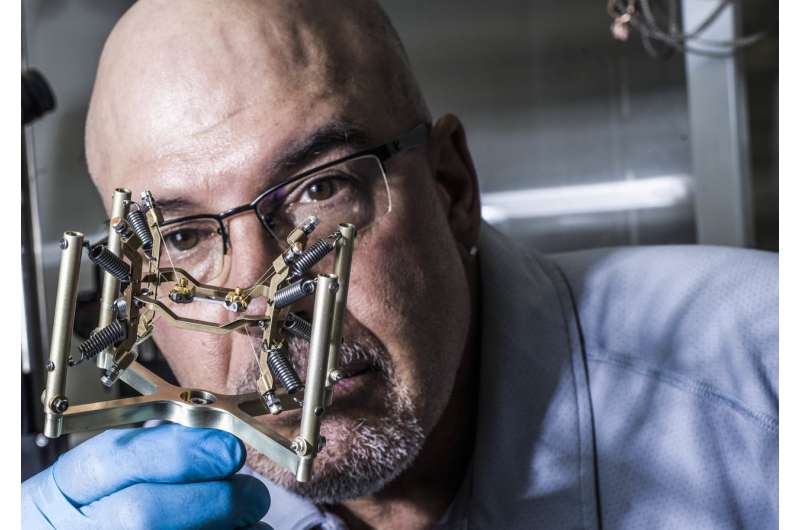The 'Gloo' behind James Webb Space Telescopes Spider technology

It takes a team of talented individuals working in unison to brainstorm, build and deliver what will become the world's most powerful space telescope. Marcelino Sansebastian is a Senior Instrument Technician at NASA's Goddard Space Flight Center in Greenbelt, Maryland who has been deeply involved with NASA's James Webb Space Telescope since the project began. Known for his passion, skillset and unique nickname 'Gloo', Sansebastian has had his hand in helping design and invent a long list of mission-critical components that have flown to space over the last 30 years.
Even though it is already quite cold in outer space, one of the four instruments aboard the Webb telescope known as MIRI (Mid-Infrared Instrument) requires additional cooling to bring it to an even more frigid operating temperature of approximately minus 450°F (minus 266°C). If you are looking for heat signatures, and that's what Webb's instruments will be doing, the instruments themselves have to be incredibly cold, so they are intentionally cooled down so their sensors can more readily detect faint thermal signatures.
The hyper-sensitive detectors on MIRI will allow it to see light from distant galaxies, newly forming stars, faintly visible comets, as well as objects in the Kuiper Belt—a vast rim of primordial debris encircling our solar system. MIRI's optics will provide wide-field, broadband imaging that will continue the breathtaking astrophotography that has made the Hubble Space Telescope so universally admired.
Aptly named a 'Spider' for its eight thermally isolating Kevlar fibers and coiled shock reducing legs, the device pictured here is designed to securely guide small cooling and exhaust tubes throughout the observatory. As a mission-critical component, the Spiders that have been installed on Webb were built by a technician who as a child, had dreamed of working for NASA.
"I always thought rockets were neat when I was younger, and was always looking up at the stars. One night when I was 10 years old, my Uncle Paco woke me up while we were in this little village in the middle of Spain. He said 'Follow me, get dressed—we are going somewhere.' We then walked down this long dark dusty path in the middle of the night, and stepped into this small house that had the only television around. He knew somehow that it was important for me to see the first humans landing on the Moon, live as it happened... Because of that I always thought and dreamed about working for NASA"
Before technicians like Sansebastian could begin assembling the telescope, certain inventions like these "spiders" needed to be custom built to empower Webb to begin its search for untold cosmic wonders. These enabling technologies are at the forefront of human capability and have only recently become available for space missions, and are in-part why Webb will far surpass its predecessors.
"I think the most impressive thing about the James Webb Space Telescope is that we are taking all these different and incredibly complicated components made from all these exotic materials, and assembling them into one functioning unit. Exposing it to the rigors of launch, and extreme temperatures found in space and then commanding it to deploy in a long series of ballet-inspired movements. To me, it's mind blowing."
Provided by NASA's Goddard Space Flight Center





















